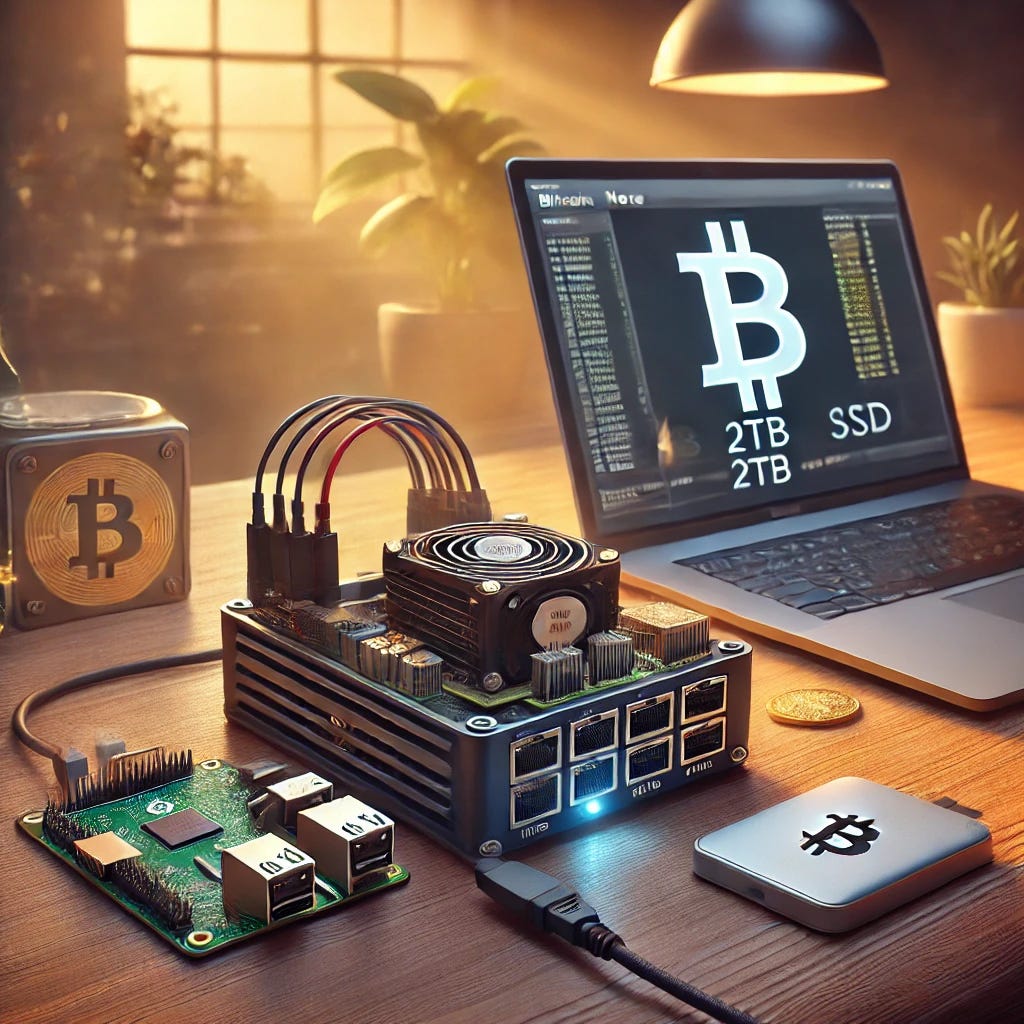How to Set Up a Bitcoin and Lightning Node: DIY vs. Ready-Made Solutions
If you're thinking about running a Bitcoin and Lightning Network node, you have two main options: build everything yourself (Do It Yourself - DIY) or rely on ready-made solutions
Option 1: DIY (Do It Yourself)
If you want maximum control over your node and truly understand how Bitcoin and Lightning work, the DIY method is the way to go. Here are the key steps:
Hardware: A Raspberry Pi 4 with at least 8GB RAM, a 1-2TB SSD, a passive cooling case, and a reliable power supply.
Installing Bitcoin Core: Download the official Bitcoin client, sync the entire blockchain (about 800GB), and configure it as a full node.
Setting up LND: Lightning Network Daemon (LND) is the most commonly used software for running a Lightning node. After installation, you’ll need to open channels, manage liquidity, and connect to other nodes.
Backup and Security: Secure your seed phrase, back up your configuration and hardware, and use Tor for privacy.
DIY Pros:
Full control: You know exactly what's running on your node.
Better privacy and security: No reliance on third-party interfaces.
Deep understanding: You gain real knowledge of the Bitcoin and Lightning networks.
DIY Cons:
Technical knowledge required: You need to be comfortable with Linux and command-line operations.
Ongoing maintenance: Updates and troubleshooting are your responsibility.
Option 2: Ready-Made Solutions
If you don’t want to handle every technical detail, several projects make setting up a node easier. Here are the most well-known ones:
1. Raspiblitz (Open-Source)
A great middle-ground between DIY and pre-packaged systems. It runs on your hardware (Raspberry Pi or mini PC) but provides automated scripts to install Bitcoin, LND, and useful tools like Tor and BTCPay Server.
2. Start9 EmbassyOS (Open-Source)
A sovereign computing OS that can be installed on your own hardware or bought pre-installed on a device. It’s open-source and modular, but some advanced features require a paid license.
3. Umbrel (Not Fully Open-Source)
Very easy to install, with a user-friendly interface and a one-click app store. However, it’s not entirely open-source, which means trusting the development team.
4. MyNode (Partially Open-Source)
Similar to Umbrel, but with more advanced options. The free version has some limitations, while the premium version offers additional tools.
5. Nodl (Open-Source, but with Proprietary Hardware)
A plug-and-play solution with preconfigured hardware. Great for those who want a hassle-free node, but it comes at a higher cost.
Ready-Made Solution Pros:
Easy setup: Ideal for those who don’t have time to configure everything manually.
User-friendly interfaces: No need to use the command line.
Less maintenance: Updates and configurations are more automated.
Ready-Made Solution Cons:
Less control: You rely on third-party software and developers.
Potential privacy and security risks: Some systems collect telemetry data.
Dependency on third parties: If the project shuts down, keeping your node updated could become difficult.
DIY vs. Ready-Made: Which One Should You Choose?
It all depends on your needs. If you want to learn and have full control, the DIY approach is unbeatable. If you just want a working node with minimal effort, solutions like Raspiblitz or Start9 are the best open-source alternatives.
No matter which option you choose, running a Bitcoin and Lightning node is crucial to decentralizing the network and gaining true financial sovereignty. The most important thing is to take part! ⚡️



